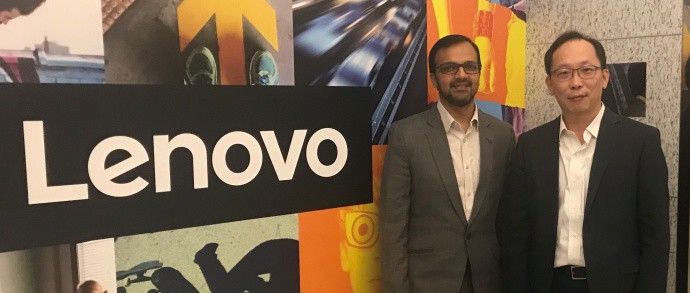Lenovo is setting its sights on three vertical sectors in Hong Kong – smart workplace, smart retail and smart transportation – as it makes a major play in the city’s nascent IoT market.
According to Ronald Wong, general manager for Hong Kong and Macau at Lenovo, enterprise customers in the city are still in the consultative phase about new projects involving new technologies such as IoT. However, Lenovo is keen to have a sit at the table in this early stage to get a foothold into the market.
“Companies are still looking into which specific area is ready to pilot the technology,” Wong said. “However, I think it is the right time for us to talk to them in order to understand their pain points and their readiness. We can then put together our understanding on the coming market trends with their understanding on their particular industry. We can start to work on what could be some of the potential IoT scenarios that they can work on and we can agree with the customers to prioritise.”
Working on the three vertical sectors
Lenovo sees three vertical sectors in Hong Kong that show huge potential for wide IoT adoption. First among these is in the smart workplace environment where companies can use IoT to determine the number of desks it needs support employees in the office.
“From industry analysis, we know that one desk can cost US$200-US$250 per month to manage. If I’m running an office of 100 employees and if I have to spend $250 per month per desk, is there a way I can optimise the usage of the desk?” said Vinay Solanki, head of IoT business for APAC at Lenovo.
By adopting smart workplace approaches such as hot desking or what they call a flexi-working arrangement, companies can actually plan for an 80-seat office to accommodate 100 to 120 employees.
“The reason is because we know that everyday occupancy will never reach 100%,” Solanki said. “Some of the employees will be salespeople; some people will be working from home; some people will be on vacation; which means I don’t need 100 spaces in the office to accommodate 100 employees. That’s where the usage of smart office comes into play. There are a few other used cases like allowing you to book a meeting room on demand and so on.”
For smart retail, Lenovo hopes to help companies use IoT to help improve their customer experience with several in-store solutions such as self-checkout, mobile payment, backend inventory management system as well as facial recognition system – all of which can generate data that help retailers predicts and anticipate customer needs/
For smart transportation, Lenovo hopes to work with transport operators on solutions that would help monitor drivers’ behaviour in real-time. And the technology vendor also hopes to work with other transport-related areas such as monitoring traffic jams across the city.
Being at the heart of the IoT hardware lifecycle management
According to Solanki, Lenovo is positioning itself to be at the centre of the hardware management lifecycle of the IoT ecosystem.
“The one of the biggest challenges right now is how to manage an IoT solution landscape -which means which do you understand how to manage the complete hardware lifecycle? We call that the hardware lifecycle management under IoT, which means starting from sourcing the hardware to supplying it to the customers, maintaining it and managing it in the customers’ premises throughout the lifecycle of the solution of IoT, not the product,” Solanki said.
“While we are still working on it, I think the key of value that we are looking at to offer to the market is on the capability that we already have explored and has matured over past many years as part of our heritage,” he added.
Also, Wong pointed out that the company has invested in new technologies such as IoT in the past two to three years. In fact, its newly launched ThinkCentre IoT devices are now being used to help some local startups build their IoT solutions.
Besides innovating on smart IoT devices, Wong said Lenovo is keen to work with other technology partners in providing different parts of the IoT ecosystem – particularly where smart infrastructure is concerned.
“Whenever we have the hardware devices, it will be for Lenovo to work with the ecosystem partners or specifically targeting in some enterprises on smart cities’ solutions,” Wong said. “In the smart infrastructure areas, combining all of the PCs, servers, storage and together with the new VR, AR technologies, we’ll be providing an ecosystem. Then, we’ll urge to work with the solution partners, making Lenovo readier to provide the total solution to the market.”



